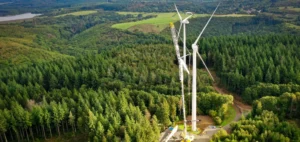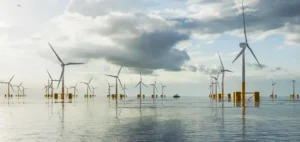The Crown Estate communicates about the UK government’s Celtic Sea program to provide renewable energy. The goal is to reach 4GW by the year 2035.
A region with great potential
The Crown Estate announces that the region has the economic potential to accommodate up to an additional 20GW by 2045. The program will boost the UK’s net zero ambitions and provide secure energy. In addition, the region will create jobs and investment in Wales and the South West of England.
The declaration allows potential developers to form consortia as well as prepare for the mid-2023 tender. The Crown Estate informs developers that they will provide a plan of their initial investment. The final award of a lease for each site will be based on the price quoted.
A precise procedure
The British government wants to speed up the leasing process, recognizing the importance of bringing floating wind into service quickly. It also carries out technical and environmental studies before obtaining authorizations. This allows it to provide data to successful bidders to accelerate their projects, potentially by several months.
Nicola Clay, Head of New Ventures Marine at The Crown Estate, announces:
“Recognizing the importance of a strong supply chain, we will ask bidders to present their supply chain plans as a key element of their bid. In an internationally competitive market, The Crown Estate will continue to facilitate investment in jobs, skills and infrastructure, so that communities around the Celtic Sea can benefit from the opportunities that a floating wind economy can generate.”
Following the July announcement of five broad “areas of search”, the UK government is now publishing refined “areas of search”. Thus, these are smaller areas of the seabed in which projects can be located in the future.
A local consultation
For the Crown Estate, zones 1 and 5 are not included in the study. However, five smaller sites appear in Zones 2, 3 and 4. These five sites will emerge in the coming months as potential project development areas.
The process ensures that developers have access to floating offshore wind locations that are expected to be feasible in the near term. The stakeholders are committed to maintaining a dialogue with fishing communities and environmental groups. The Crown Estate will also conduct technical and environmental studies prior to consent.






















